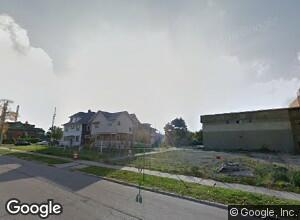Housing Inequality
Author: Katherine Bouma
Housing inequality has never been a new concept in America. However, as the wage gap is expanding, housing inequality has become an increasingly alarming subject. While there has always been a wage gap, cities are struggling to support the citizens that wish to reside there and those being pushed out. When residents wish to live in urban areas, their safety cannot be guaranteed as unchecked building codes and environmental factors affect the already broken system. Government policies such as zoning regulations continue to have a detrimental impact on the communities affected.
Drastic changes need to be made to decrease the gap between those who want affordable housing and those who are sitting on massive amounts of property. While low-income citizens who wish to live in urban areas are forced to sacrifice their safety, developers seek to find the highest bidder on their flashy new complexes. Equality can be better accomplished through modernized regulation of land use. While some spaces are designated for specifically keeping spaces limited to a certain group of people, more modernized policies need to be enacted to ensure a more diverse representation of the population can reside in areas they would like to live in.
By creating a more equal zoning system, housing inequality will become a more manageable problem in today’s cities. As Majora Carter points out, zoning is responsible for the waste facilities that can be found in run down areas like that of her home. These waste facilities were placed here because the government did not find value within these communities. Policy makers did not think of the long-term repercussions of their actions. Waste facilities create a toxic environment for residents. Pollution, run-off, and other hazardous materials fill the surrounding communities with toxic substances and can harm its residents. Areas fell into further disrepair, encouraging the few middle-class citizens out and solidifying the low-income, crime ridden neighborhoods. By updating zoning laws, citizens do not have to worry about their communities being infiltrated by such hazardous operations.
The case study focuses on the inattention to housing inequality, in light of the tragedy at Grenfell Tower in London. The article highlights the lack of security provided to low-income citizens in urban areas. In the case of Grenfell Tower, a low-income housing area fell victim to 80 deaths due to the poor conditions of the complex. This speaks to the negligence on the government’s position to ensure safe, affordable housing to citizens in the community. Housing standards are not up to code, as 80 people lost their lives in this avoidable tragedy. The author further strengthens her point as she states, “A third of all urban dwellers worldwide lack access to safe and secure housing.” While the middle and upper classes have access to safe housing, the poor are left to question their safety in their own homes. While housing may be available, that does not mean it is equal in terms of safety measures. The poor must sacrifice their own health as safety codes are not enforced like they are in more expensive areas. This sacrifice has costed 80 people their lives, and many more if more is not done about the inequality that exists. Housing inequality is exemplified in this case study, illustrating the negligence of policy makers to ensure every person has access to safe, affordable housing.
Affordable housing should not be something people have to lose their lives over. Affordable housing should be something every citizen should have access to, regardless of their income. Shifting the focus to zoning laws and building codes should be the focus of policy makers in every major urban area. Until policy makers bring attention to the housing conditions apparent in every major city, the inequality that has been a major factor in our country will only continue to become a bigger issue and persist into further generations.
An example of this principle at work: The Crisis For Affordable Housing Is a Problem Everywhere
Back